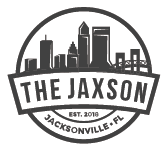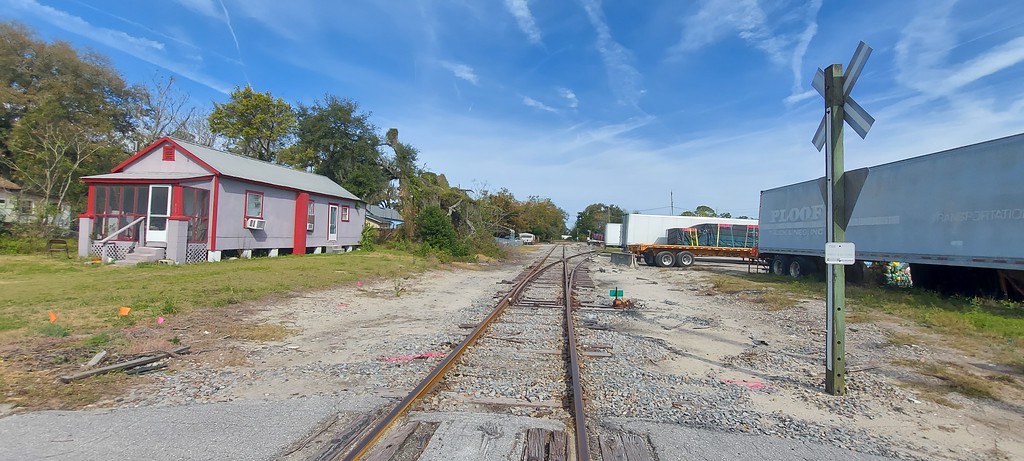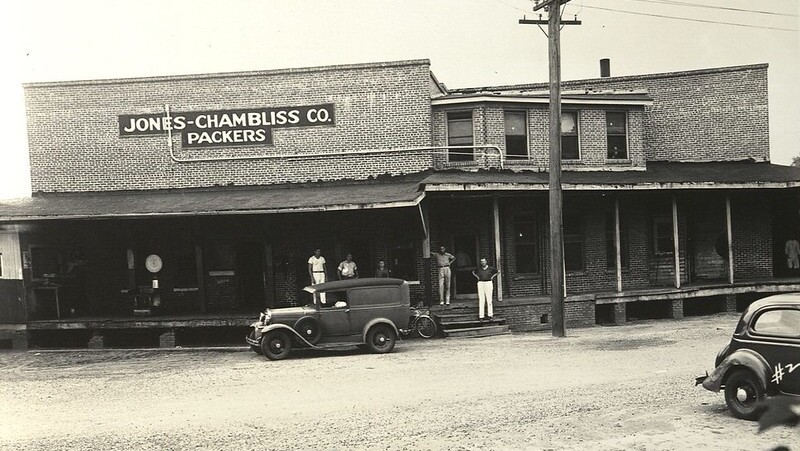
Here are five facts about Milldale: A long-forgotten industrial mill town born from Panama Park’s Cummer Lumber Company.
1. A community built to support industry

In 1896, recognizing the value of Florida’s cypress and timberlands, Wellington Wilson Cummer established the Cummer Lumber Co. at Sandfly Point. The sawmill quickly grew into the Jacksonville area’s largest employer. With business thriving, the adjacent area developed into Milldale, a community providing housing, shops and other amenities for the mill workers.
Following Cummer’s death in 1909, his sons Arthur and Waldo took over the company. While Arthur and Ninah Cummer’s Riverside estate would later become the Cummer Museum of Art and Gardens, the former mill site took on new industrial roles. It was repurposed into a drydock yard for the George D. Auchter Co. and, in 1939, a wallboard manufacturing plant for the U.S. Gypsum Company. Utilizing the original railroad for transporting raw materials, the 42.8-acre USG facility grew into a 700,000-square-foot industrial operation with its own paper mill to produce chipboard paper exclusively for USG’s gypsum products.
Today, USG stands as the nation’s largest distributor of wallboard and the leading manufacturer of gypsum products. Among its most recognized brands are SHEETROCK, FIBEROCK, and Tuff Hide. The Jacksonville plant is one of USG’s largest, producing more than 23 million sheets of wallboard annually. It also serves as a key distribution center for products including DUROCK cement board, FIBEROCK gypsum fiber panels, wallboard accessories, and dry setting-type compounds. From Jacksonville, these products are shipped nationwide as well as to markets across Central and South America.
2. A Buffalo, New York, connection

The heart of Milldale was formally laid out as the Charles E. Bell Subdivision, named in honor of local real estate developer Charles E. Bell. Born in Buffalo, New York, on January 11, 1870, Bell was the son of James S. Bell, who had been affiliated with the firm of Pratt & Co. in Buffalo. In 1880, the elder Bell relocated the family to Jacksonville to pursue opportunities in real estate. Following in his father’s footsteps, Charles E. Bell also entered the real estate business.
Bell’s Subdivision primarily served the African American communities of Milldale and nearby Panama Park in the early 20th century. It was officially annexed into the city of Jacksonville in 1925. A lingering vestige of segregation, the streets within Bell’s Subdivision remain disconnected from the traditionally white sections of Panama Park located immediately to the west.
3. The Cummer Avenue business district

During the operation of the Cummer Lumber Co. mill, Cummer Avenue served as the community’s primary thoroughfare. Between East 56th and East 59th streets, a cluster of businesses supported the surrounding neighborhoods, the lumber mill and other nearby industries. These establishments included Mary Reid Drugs, William A. Suiter Dry Goods, and the Clarence E. Haight Department Store. North of East 59th Street, the west side of Cummer Avenue was lined with several African American residences.
Cummer Avenue was annexed into the city of Jacksonville in 1932. Following the mill’s closure, the street was renamed Evergreen Avenue. Over time, the entire district along Evergreen Avenue was gradually cleared and redeveloped for industrial use, erasing the historic fabric of the original community.
4. Religion in a mill town

At its height, there were as many as two churches in Milldale. The Phoenix Baptist Church was established at the northwest corner of East 56th Street and Cummer (now Evergreen) Avenue in 1908. By 1951, it had been renamed Liberty Baptist Church. Serving the African American community, the Redeemer Baptist Church was located at the end of an unpaved East 57th Street, one block north. The Redeemer Baptist Church building was constructed in 1904. Over time, both congregations moved on from Milldale. The Phoenix Baptist Church property was demolished and is now used as a parking lot for trucks at the USG Jacksonville plant. The Redeemer Baptist Church building still survives and is used as a residence.
5. Terminus of the Jacksonville & Southwestern Railroad

Now a CSX track serving USG Jacksonville’s plant, this section of railroad track was originally built by the Cummer Lumber Co. and known as the Jacksonville & Southwestern Railroad. Completed in 1899, it was built to connect the lumber company’s Milldale operation to timber lands near Newberry, Florida. In 1904, it was acquired by the Atlantic Coast Line Railroad.
Eventually, the ACL extended the railroad by constructing a bridge over the Trout River, just north of Milldale. In 1967, the ACL merged with its longtime rival Seaboard Air Line Railroad, creating the Seaboard Coast Line. Additional mergers in the industry led to the creation of CSX Transportation. The removal of duplicate routes led to Milldale’s railroad trestle being dismantled.







